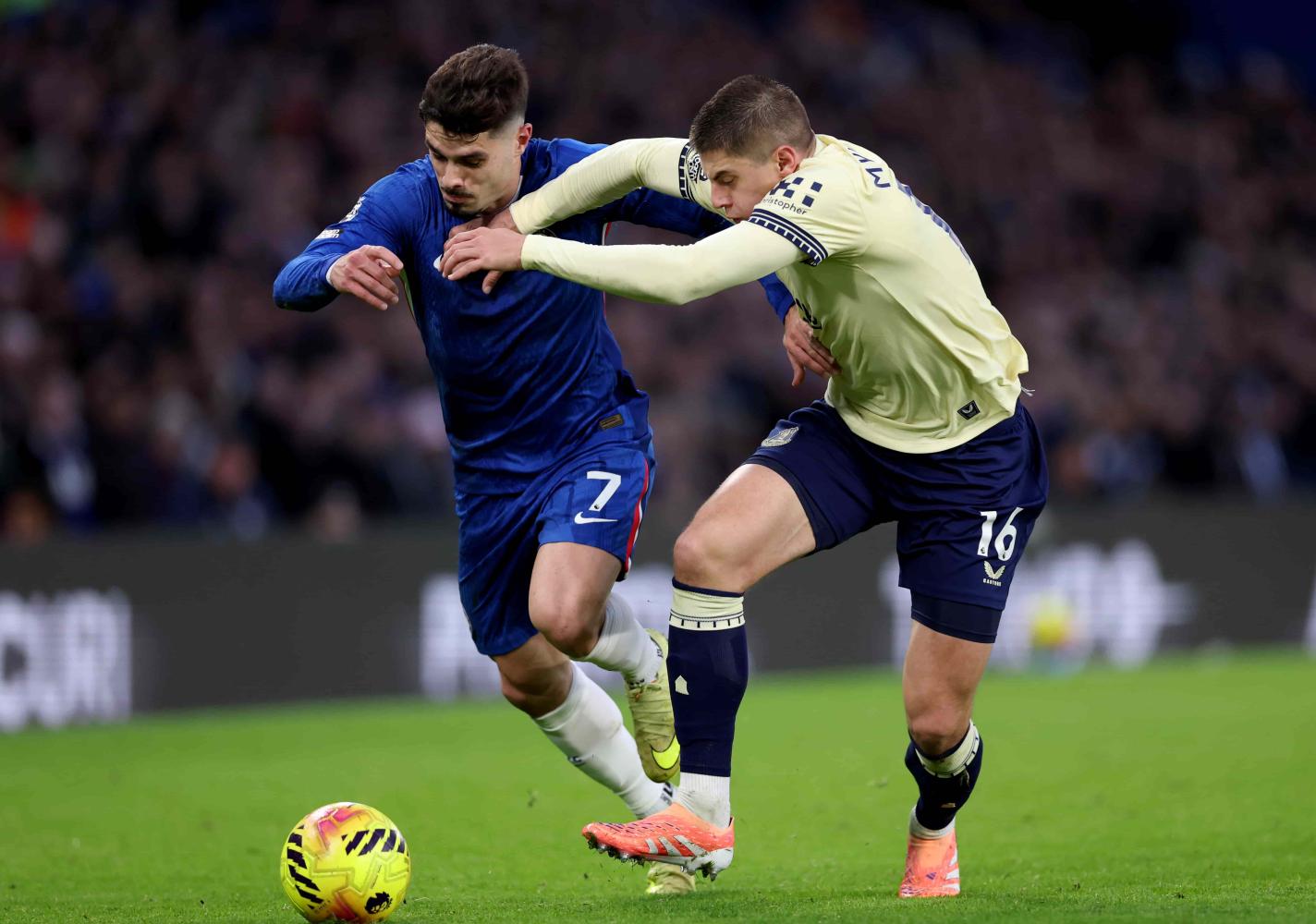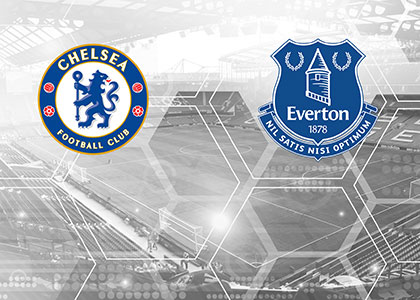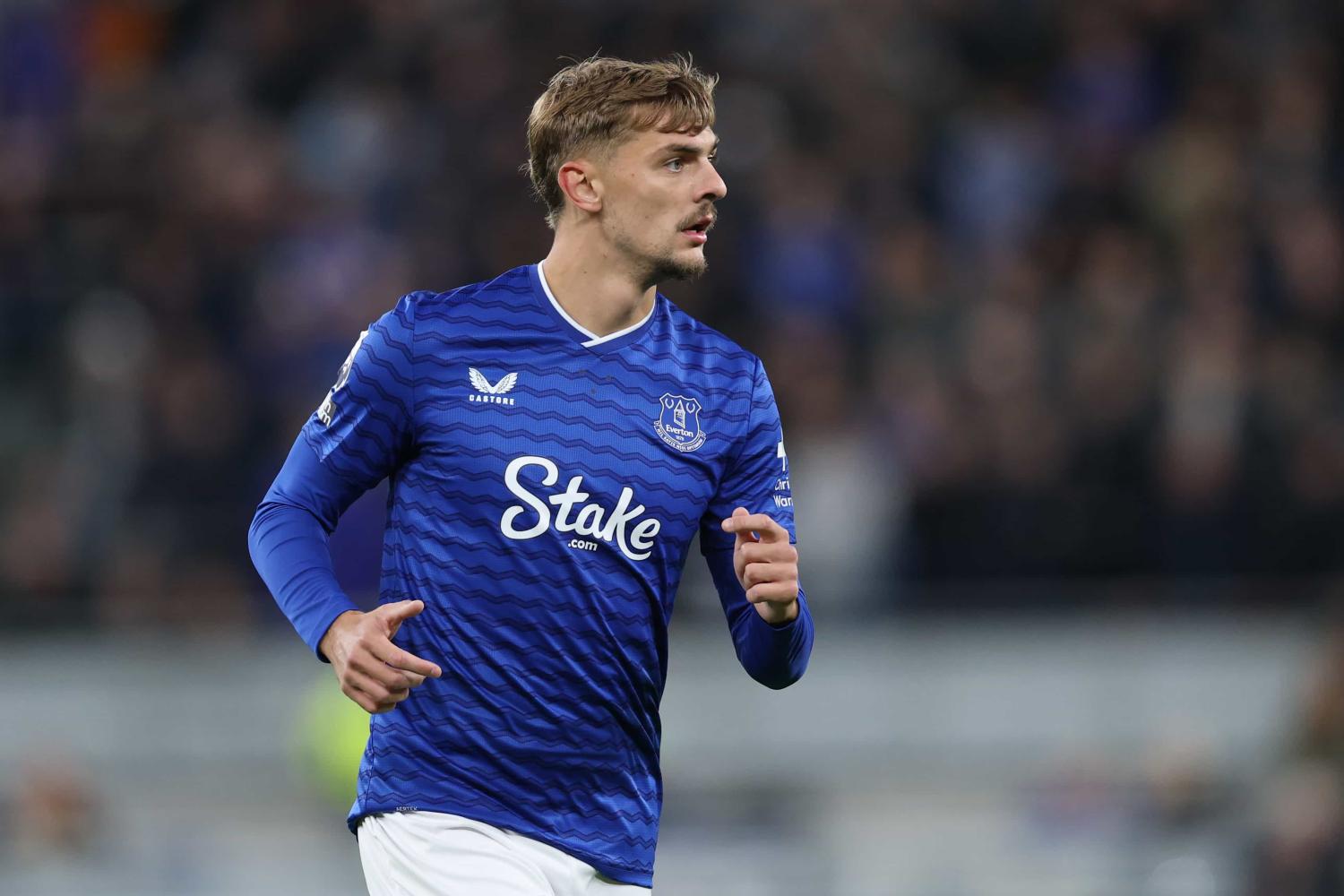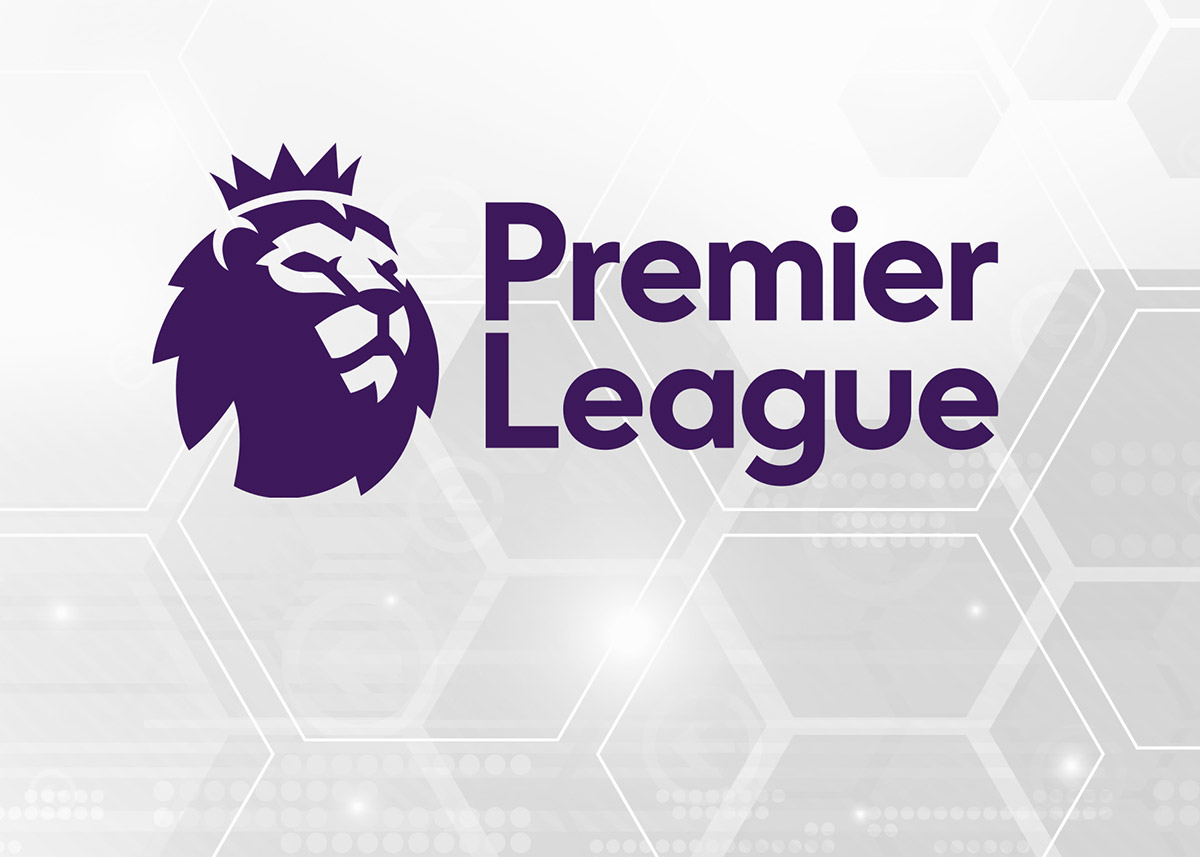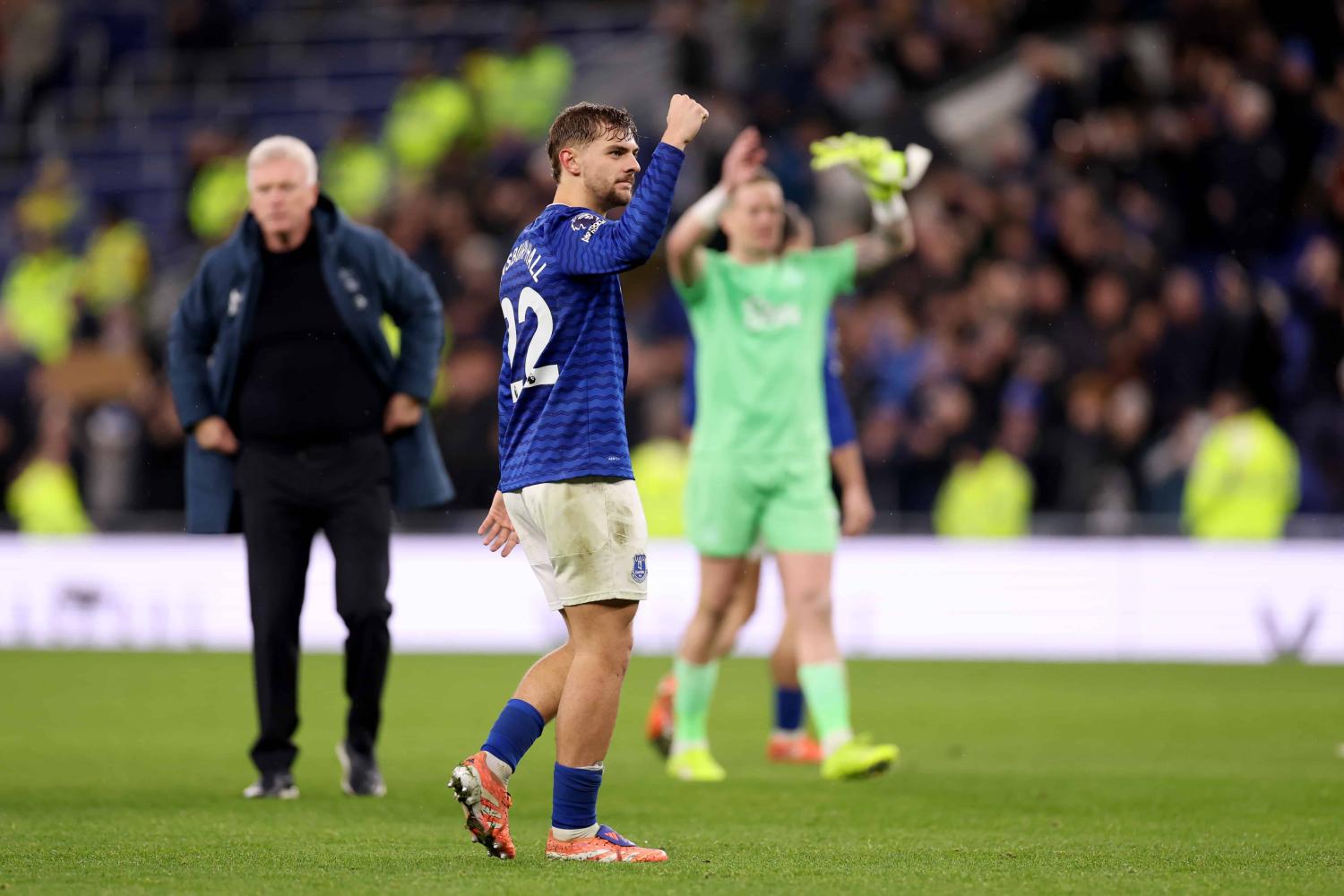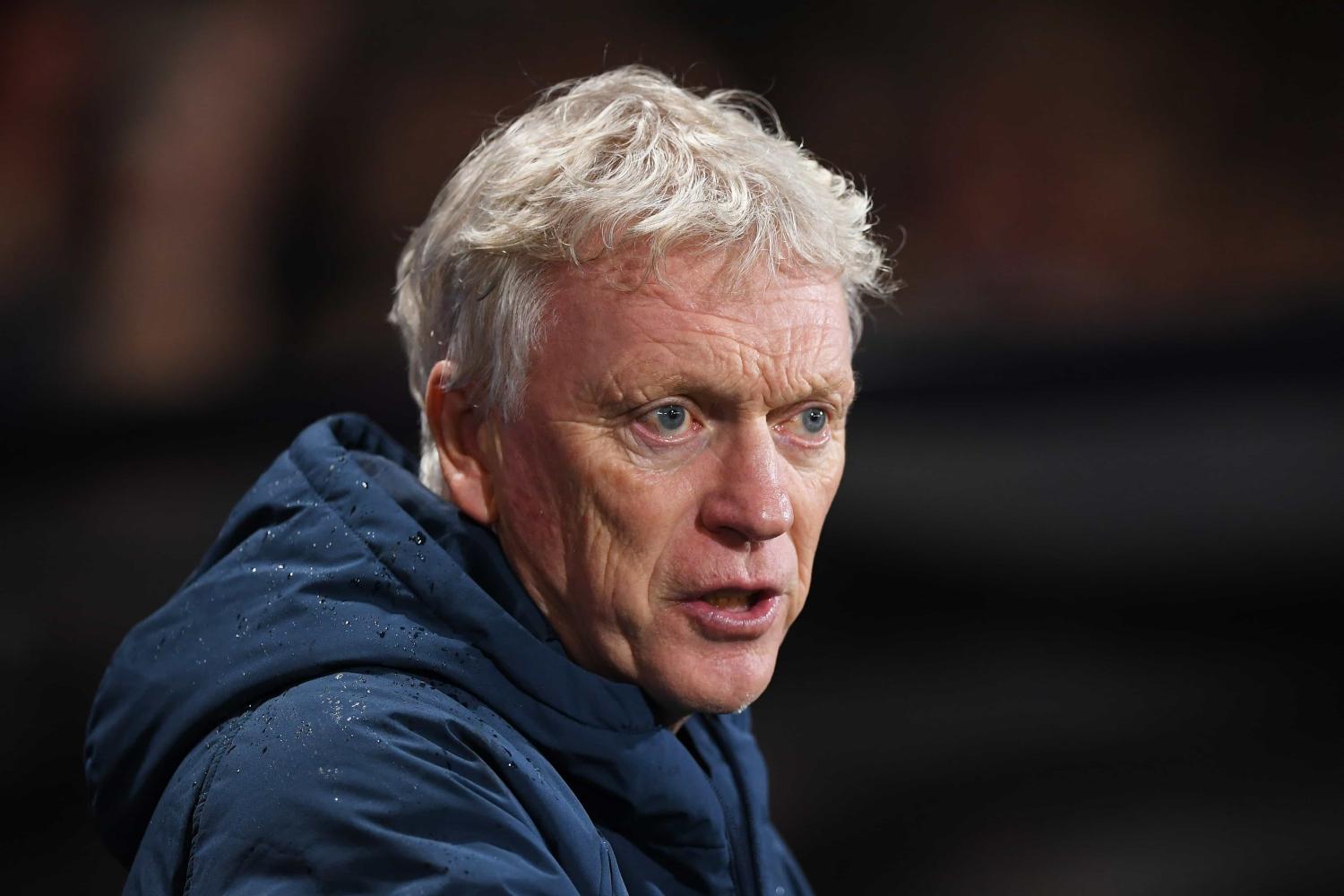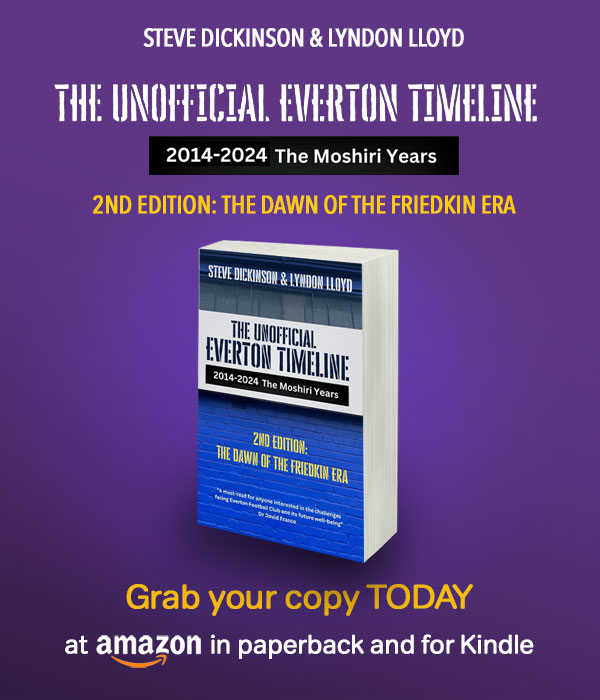Kings Dock Proposal
A fabulous new stadium was proposed at the Kings Dock site, which Everton pursued in earnest, until the hurdles became insurmountable
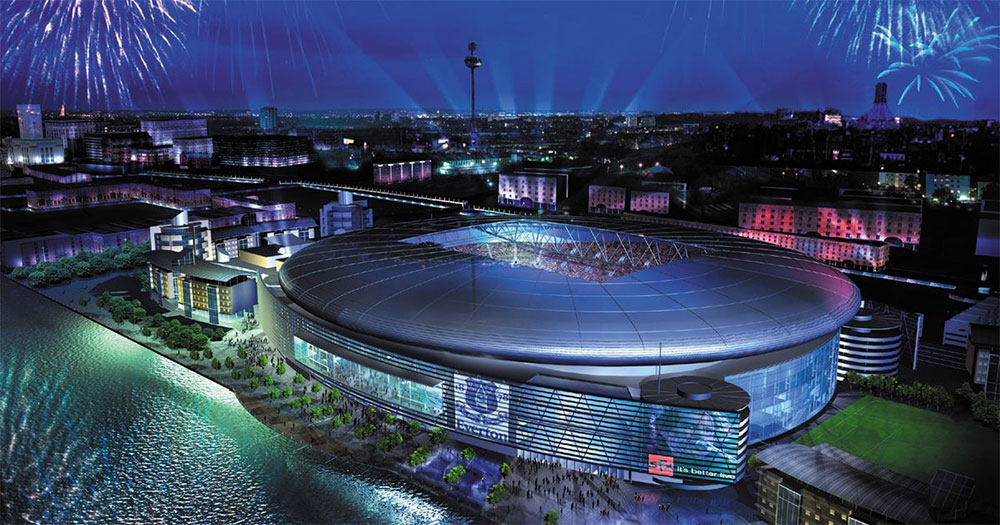
- The Stunning Proposal
- Ownership and Naming
- Bidding Process
- Selection Process
- Selection Committee
- Financing
- The Official Vote
- Goodison For Ever-ton
- Redevelopment / Alternatives
- The End Finally Comes
THE STUNNING PROPOSAL
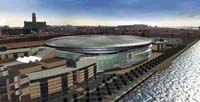 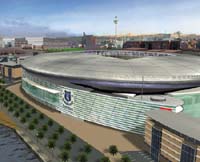 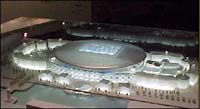 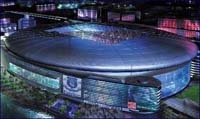 |
You've heard so much about it, but just what exactly are Everton
proposing for what is now called the Kings Waterfront Development?
The "Waterfront Stadium and Arena"
Everton aren't lying when they say that their finished project
will be one of the most advanced and magnificent structures of its kind in
the world. With a seating capacity of 55,000 (including 70
Executive boxes and 2,750 "Business Seats"), the main purpose of
the stadium will be to host Everton's home fixtures and, hopefully, other
major footballing events.
However, it will double as an entertainment arena with a varying capacity of between 5,500 to 24,000 thanks to a retractable roof and pitch.
The roof can be opened for "outdoor" events and closed for indoor or night-time occasions like rock concerts, exhibitions, shows etc, making the Kings Dock a true rival to Manchester's GMEX Centre. In addition, the pitch will be built on a giant, wheeled, concrete tray 40 cm deep, 80 m wide and 120 m long, making it easy to roll the playing surface at the touch of a button through the stands and out to the side of the stadium where it will double as a park complete with water feature for local residents.
The venue will be have a capacity for conferences of 5,000 (excluding the arena format) and provide for 3,000 Restaurant/Banqueting capacity, 10,000 m² of exhibition space and 2,800 car parking spaces.
Housing & Leisure Complex
The Kings Waterfront Development will also feature 650 one, two and three bedroom apartments, a multi-screen cinema complex, af family entertainment centre, health clinic, fitness club, 150 room 4 or 5 star hotel, bar, restaurants, complimentary shops and offices, street theatre and a late night live music venue - "all at a cost of £150 million" according to the club.
The stadium part of the development will £155 million with up to £30 million generated by Everton FC and approximately £35 million coming from the public sector. The rest of the cost will be met by private investors and sponsorship. The total cost of the project will top £300 million.
BACKGROUND
December 2001
Everton have signed up prestigious developers Bovis Lend Lease as construction management consultants for advancing project planning as part of their preferred bid that will include a new stadium for Everton.
A company has been established to press ahead with plans for the Kings Waterfront Development. Sir Joe Dwyer, chairman of Liverpool Vision (one of Everton's partners in this public/private venture) has been named as its head.
Everton's plans for a massive and far reaching development of Kings Dock – plans that will include a new 55,000-seater state-of-the-art stadium at its centrepiece – won preferred bidder status from Liverpool Vision back in July 2001. This was arguably the most important step and an enormous achievement by Everton FC.
As the project develops, inevitable changes are being made to the detailed plans and layouts. These changes are not being made public, we are told, because they are subject to change. But some information is being leaked, much to the annoyance of the confidentiality-possessed insiders. However, it is 51% a public project, after all! Surely Everton fans have a right to know what is going on?
PROJECT TIMELINE
This is as far as they got with the construction of a new stadium at Kings Dock:
- Submission of the initial bids to develop Kings Dock (6 October 2000)
- Publication of Everton's ambitious plans (20 October 2000)
- Fans vote strongly in favour of a new stadium at Kings Dock (18 November 2000)
- Submission of detailed proposals in a second round of bidding (17 January 2001)
- Postponement of selection to allow full due diligence of leading bids (4 May 2001)
- Selection of the Preferred Bidder by Liverpool Vision (18 June 2001)
- Preferred Bidder ratified by the Board of English Partnerships (2 July 2001)
- Official adoption of the Preferred Bidder by English Partnerships (23 July 2001)
- Verification by the Dept of Transport, Land Generation, and Regions (2 August 2001)
- Establishment of the Kings Waterfront Development Company (12 September 2001)
- Appointment of Bovis Lend Lease as construction managers (3 December 2001)
- Securing the support of local and regional councils (Jan/Feb 2002)
- Securing the available grants, sponsorships and other financing (Project stalled here!)
- Securing agreements with development partners (hotel, shopping, residences)
- Submission of a Planning Application to Liverpool City Council
- Approval of the Planning Application, possibly after a Public Inquiry
- Site investigations and engineering analysis of the proposed project
- Securing all permits needed for construction
- Preparation of Final Design drawings and documents
- Compilation of a tender list for construction consortia
- Publication of tender documents
- Submission of completed tenders
- Award of the construction contract to the successful bidder
- Construction finally starts on site
- Opening Ceremony
The timeline for the project got bogged down in the most basic of areas: money. Everton proved that they finally had the original money covered on 1 April 2003 — a day late and many dollars short of the escalating construction costs that were conveniently blamed for the failure of this project.
OWNERSHIP AND NAMING
Perhaps one of the most contentious points about a proposal that really has captured the imagination of the majority of Everton fans is the ownership issue; just how much of the development will Everton actually own and, consequently, how much of the precious and much-touted revenue from the rest of the site will the Club receive?
The intention is to create a management company to push through the development and run the stadium. Everton FC would own 49% of that limited company, English Partnerships 25% with Liverpool City Council and the North West Development Agency each having a 13% share. SFX, or Clear Channel Entertainment as they are now called, will not be involved in ownership of the project.
On that basis, Everton will be the majority stakeholder but their share will not be a majority holding (i.e. they will own less than 50%). Everton basically got 'channeled' into KD by the City Council. A combination of the council's planning zones, residents opposition, government urban planning guidelines (yes, that's Mr Kilfoyle labour government) and the opposition of a certain local MP (yes, that's you again, Mr. Kilfoyle!) meant there was no chance to redevelop Goodison. The council invited EFC to bid for KD and the council then suggested the public-private partnership to open up KD for European Union Objective 1 (EUO1) funding.
Another issue that is bound to arouse controversy is the name of the stadium, something that is close to Evertonian hearts. The working name for the development is "The Waterfront Stadium and Arena", but whether that is acceptable to the paying supporters is another matter.
And Bill Kenwright has not ruled out the possibility of selling the naming rights to a sponsor, raising the horrific prospect of Everton ending up something like the Heinz Baked Beans Stadium and Arena!
THE BIDDING PROCESS
Bidders proposing projects for development at the Kings Dock site submitted a second round of submissions on 17 January 2001, including models of the proposed development. Everton, submitting their joint bid with US-based Clear Channel Entertainment (formerly SFX) under Houston Securities, pulled out all the stops to prepare the best submission by a country mile, despite rumours that the controversial stadium bid would face tough competition for the prestigious riverside site from six other proposals for redevelopment. As it turned out, two of those dropped out completely, and another two failed to submit the required models.
All applications went on view for public comment at the Merseyside Maritime Museum, Albert Dock. Evertonians who viewed the plans seem unanimous in their admiration of the Club's efforts, and their awe for the vision and grandeur of the proposed project.
THE SELECTION CRITERIA
Not much was revealed about how the winning project would be selected, but it is worth noting that Everton's spectacular bid meets these objectives for the site, as stated by Liverpool Vision:
"Kings Dock has a vital role to play in raising the international profile of Liverpool. …The key to its success is to create a major attraction of international importance, which will provide facilities for local, regional and international visitors."
THE SELECTION COMMITTEE
|
The decision on the development of Kings Dock is being made by a series of committees, including:
Feedback on the relative merits of the proposed projects was sought
from the public. Contact information is given below: |
|
| Liverpool
Vision
The Observatory Tel: + 44 (0)151 707 8007 e.mail: regenerate@liverpoolvision.co.uk The Chairman is Joe Dwyer. Alistair Macdonald Tel: + 44 (0)151 703 2701 |
English
Partnerships
Arpley House, Unit 5 Tel: + 44 (0)1925 651144 e.mail: mail@englishpartnerships.co.uk PR Manager: Deborah
Holmwood |
| Liverpool
City Council
Leader's Office Tel: + 44 (0)151 225 2319 Council leader: Mike
Storey |
North
West RDA
North West Development Agency Tel: + 44 (0)1925 644734 Leader: Mike Shields |
ECHO PHONE POLL
After initially deriding the Everton bid as a make-weight that had no chance against the six other "world class" proposals, the Liverpool Echo turned full circle, eventually running a phone poll to see which plan for the Kings Dock site is the most popular with readers.
FINANCING
Houston Securities submitted their £250M proposal to English Partnerships for the development of the Kings Dock property to include, among other very important components, a 55,000-seater stadium for Everton Football Club – on the banks of the Royal Blue Mersey.
Where will the money come from?
£250M covers everything - including public works, retail developments etc.
- Some may be met by English Partnerships and Public money in return for the stake they retain (e.g. land grant, land clearance and site preparation, utilities lay-in - all of this was done for Sunderland in similar circumstances).
- Some may be met by EU money providing the arguments over public / private partnerships and Objective One get sorted out at national government level.
- Some will be met by the partnership developers for the retail and leisure side (with residential, hotel and office development partners chipping in).
- Some will (presumably) be met by Paul Gregg's SFX Entertainment giant.
- Some will be met by Everton FC (the Mirror suggests £30m but could be utter bollocks)
- Some, not much, will be raised by the deferred sale of Goodison (any money from the sale of Bellefield would be ring-fenced for a new training / youth complex),
- Some (hopefully) from new investors but most (I guess) could be from Paul Gregg (who certainly can raise the money).
The remainder (which will be substantial) will be from the Development Company (with EFC as the majority owner) borrowing. How can we do this when we are already tons in debt?
Well, it will need some co-operation (if you'll pardon the pun) from our retail bankers (likely – given the medium term boost to our finances that should result) but long-term debt for stadium funding (typically anything from 10-25 years) is SECURED against the assets built and (in many cases) the revenue streams arising from it – the interest cost is far lower than for an overdraft and there is a fixed repayment schedule over the term of the loan. It is the difference between a mortgage and an overdraft.
Looking more closely at just the stadium itself:
- Kings Dock Arena will be built at a cost of around £125M by an
EFC-controlled company called Houston Securities, in partnership with
the government agency, English Partnerships. EP will invest £40M of
the required dosh, sourced from government and EEC grants, in return
for a
mere 24% stake in the development.
- EFC will own 76% of Houston Securities with SFX owning the
remainder. This means that EFC will get three-quarters of
Houston Securities' share (76%) of the Arena and its profits.
- EFC will get 76% of 76% which works out to just below 58%. If
the Arena prospers, so will Everton.
- EFC will buy the three-quarter share of Houston Securities for
£30M, raised by borrowing against future revenue and selling Arena
rights like Executive boxes, sponsorship deals etc.
- As well as EFC's £30M and SFX's £10M, Houston will need to raise
another £45M to meet the £125M development costs. The banks
will have already given EFC money secured against the Arena's revenue,
so Houston will probably have to borrow against its main asset, the
Arena itself. This is normal practice for stadium developments.
- Essentially, EFC gets a 58% stake in its own stadium for less than a
quarter of the development cost. The downside is that if Houston
Securities went into receivership, EFC would need a new stadium.
- Houston Securities need to become a major (though not necessarily majority) shareholder/partner in the company which builds the associated retail and leisure facilities, thereby generating larger profits.
The key points are:
- It won't cost the club £250M directly (how much depends on the detail – I can't even guess); and
- It is certainly possible to fund this development, even given EFC's present finances – in fact, it is NECESSARY to do so.
Unless EFC do something like this quickly to improve the long-term business prospects we could all be looking back in fondness in 10 years time to the days when we were mediocre. Both Deloitte & Touche and KPMG's financial feasibility studies suggest KD is viable even if Everton are relegated to the Nationwide and suffer 20k crowds for 3 years. This probably represents the worst-case scenario.
If it all works and we effectively get the football revenue (plus a share of residual income from other events) from a 55,000 state-of-the-art centrally located stadium for £30M + perhaps 49% of £40M debt in the development company and an annual contribution to the running costs of the management company, then potentially we have a very good deal. There are lots of 'ifs' but this is far and away the best option open to us.
Neil Wolstenholme and John Kane
THE VOTE
This time around, the vote was much less controversial. In many ways, it was really unnecessary... but Bill Kenwright had promised that he would consult the fans... and consult them he did. The fans were asked to choose among three potential development options:
- Stay at Goodison and redevelop it into a 45,000-seater stadium.
- Stay at Goodison and redevelop it into a 55,000-seater stadium.
- Move to a new 55,000-seater stadium at Kings Dock.
And they overwhelmingly backed the choice of Kings Dock. 15,049 votes were cast in favour of Kings Dock, with just 2,349 voting to redevelop Goodison Park.
GFE – GOODISON FOR EVER-TON
Following on from the vote, Goodison for Ever-ton issued this statement:
There is no question of the GFE turning into the Evertonian equivalent of Al Gore.
We accept the result of the vote, and we were very happy in the way the club managed it, but we note with interest that there were only 17,000 votes cast out of a possible 30,000. We believe many fans voted on the understanding that Everton would own the Kings Dock development. We would like to place on record our previously stated view: that it would be highly unlikely that the club would solely own the development.
We feel many fans voted for the dock because possibly they believe the challenges at Goodison would take longer to overcome. It is to be hoped that a final conclusion can be reached swiftly on the Kings Dock issue as it is almost 5 years since the discussions about Goodison's future first surfaced.
We can't afford to waste that same amount of time again, then once again look to Goodison Park to provide a solution. We know that this ballot result means that Everton have a mighty task a head of them in acquiring the site, to reward the majority of fans who believe this is right for our club.
We must not forget that there are still major infrastructure problems to be addressed to satisfy English Partnerships that this is the right development for this world heritage site. To be fair to the club, Michael Dunford has stated almost in every interview that this is not a forgone conclusion. We are obviously disappointed but this is not the end.
Like the club, we will wait until the decision has been made on who can develop the Kings Dock site before we call it a day on Goodison Park. We proved Goodison can be rebuilt. And let's not forget – if the Kings Dock bid fails, the club may have to go back to the Goodison option, as they have stated.
REDEVELOPMENT
What if the bid for the Kings Dock site fails? The Everton Board don't even want to consider the possibility that the bid will fail.... but if it does, the options must include:
- Modernise Goodison Park in situ. Groups like
GFE believe this is feasible, which
contradicts the unpublished internal feasibility report the club says it
has, proving it is not economically feasible.. Renovation in tight urban spaces costs far
more than a greenfield / brownfield build — look at the costs Spurs
and others have racked up vs. Sunderland / Boro / Derby / Soton etc.);
and
- A different greenfield site — probably near edge of city, motorways etc. Could be reasonably cost competitive vs. KD (especially as it would probably be 100% owned) but against this we won't get potential multiple use revenues, city centre prestige and profile (these will be a big help with sponsors etc.) or the opportunity to get one over Liverpool as we remind them who's city it really is!
Then there is the dreaded but coolly logical suggestion of ground-sharing with Liverpool FC!!! A joint stadium would face the same site restrictions as development of either Goodison or Anfield (Stanley Park is off limits) plus the opposition of both clubs and a large numbers of supporters. It is, in theory, economically the most attractive alternative — but a theory is all it will ever be.
THE END FINALLY COMES
April 2003
When the announcement finally came, Evertonians had become immune to the abject disappointment, after having been successfully primed for it by a steady drip of bad news about the Kings Dock project since October 2002.
Everton have struggled (for one reason or another) to come up with the £30M investment required to buy their 50% stake in the £150M stadium portion of this £300M project.
But the Club has persisted to the bitter end, desperate to prove to all the doubters that they could come up with the money... even if it did take them two years to do so. And in that time, the costs of the stadium are claimed to have escalated by an incredible 20% (£30M).
Everton thought they could sell Goodison Park for retail use and recoup £15M to £20M, and they all along expected that Paul Gregg would personally guarantee the £30M. In October, 2002, Both of these pipe-dreams evaporated and the future of the project hung in the balance, despite lashing of positive spin form the Club itself. Paul Gregg developed a highly controversial 'reverse mortgage' scheme (see Tony Wooly's analysis) that did not find favour with the more risk-averse members of the Everton Board.
With some key deadlines coming and going, the Board of Liverpool Vision voted to give Everton some more time, but made the critical decision to withdraw the Club's Preferred-Bidder status on 31 December 2002. This opened up the possibility to consider other more modest proposals for the prime waterfront site. Bill Kenwright remained upbeat and the official line form the Club was that they would continue to work on getting the finance in place, with even more commercially sensitive due-diligence dragging the process along at a snail's pace... The thought that the Moores family could be involved again — specifically Lord Grantchester, who is thought to be able to finance the project himself if it were not for long-time enmity between him and Bill Kenwright — seems like a ridiculous pipe-dream.

